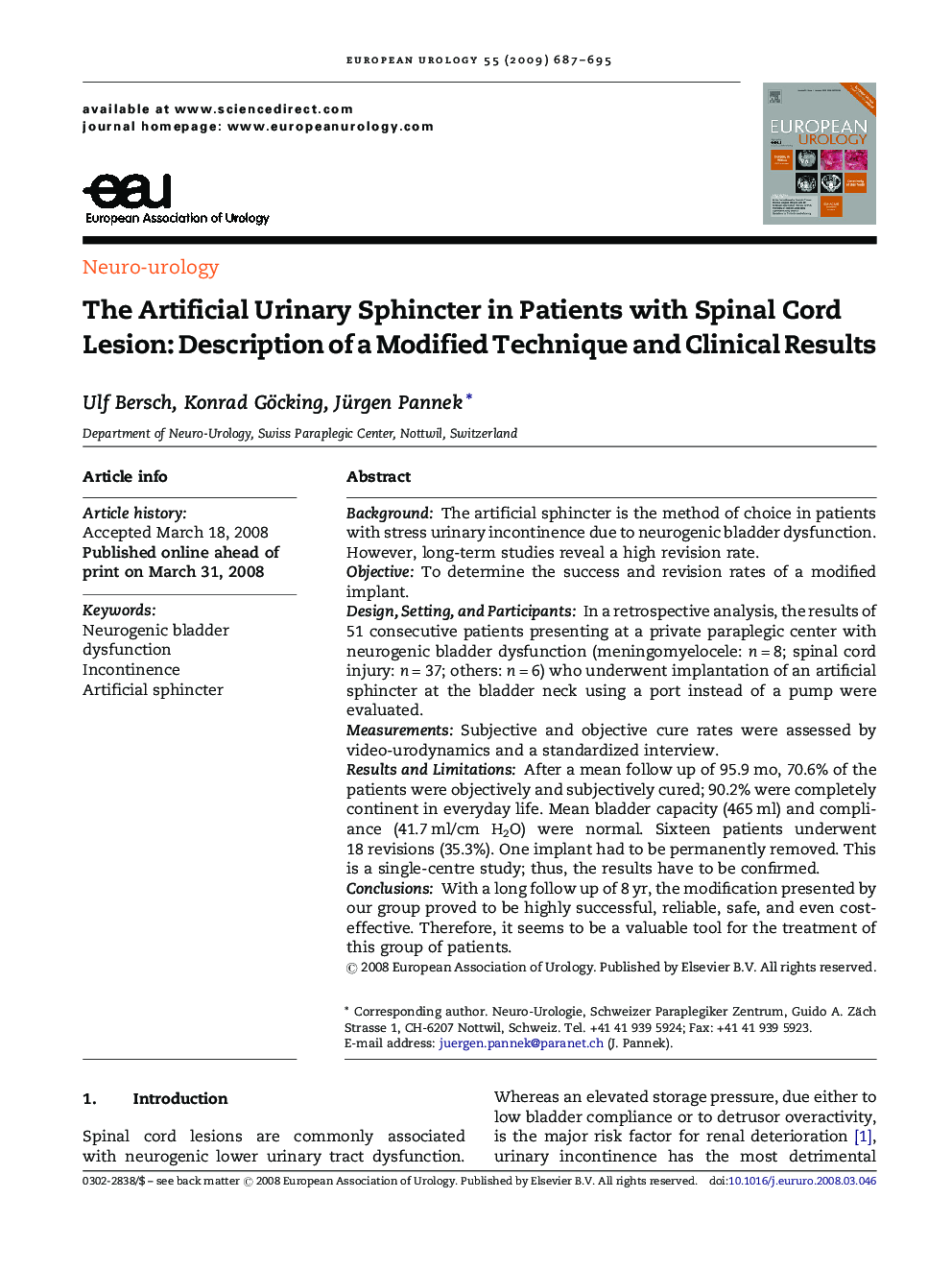| Article ID | Journal | Published Year | Pages | File Type |
|---|---|---|---|---|
| 3924914 | European Urology | 2009 | 9 Pages |
BackgroundThe artificial sphincter is the method of choice in patients with stress urinary incontinence due to neurogenic bladder dysfunction. However, long-term studies reveal a high revision rate.ObjectiveTo determine the success and revision rates of a modified implant.Design, Setting, and ParticipantsIn a retrospective analysis, the results of 51 consecutive patients presenting at a private paraplegic center with neurogenic bladder dysfunction (meningomyelocele: n = 8; spinal cord injury: n = 37; others: n = 6) who underwent implantation of an artificial sphincter at the bladder neck using a port instead of a pump were evaluated.MeasurementsSubjective and objective cure rates were assessed by video-urodynamics and a standardized interview.Results and LimitationsAfter a mean follow up of 95.9 mo, 70.6% of the patients were objectively and subjectively cured; 90.2% were completely continent in everyday life. Mean bladder capacity (465 ml) and compliance (41.7 ml/cm H2O) were normal. Sixteen patients underwent 18 revisions (35.3%). One implant had to be permanently removed. This is a single-centre study; thus, the results have to be confirmed.ConclusionsWith a long follow up of 8 yr, the modification presented by our group proved to be highly successful, reliable, safe, and even cost-effective. Therefore, it seems to be a valuable tool for the treatment of this group of patients.
